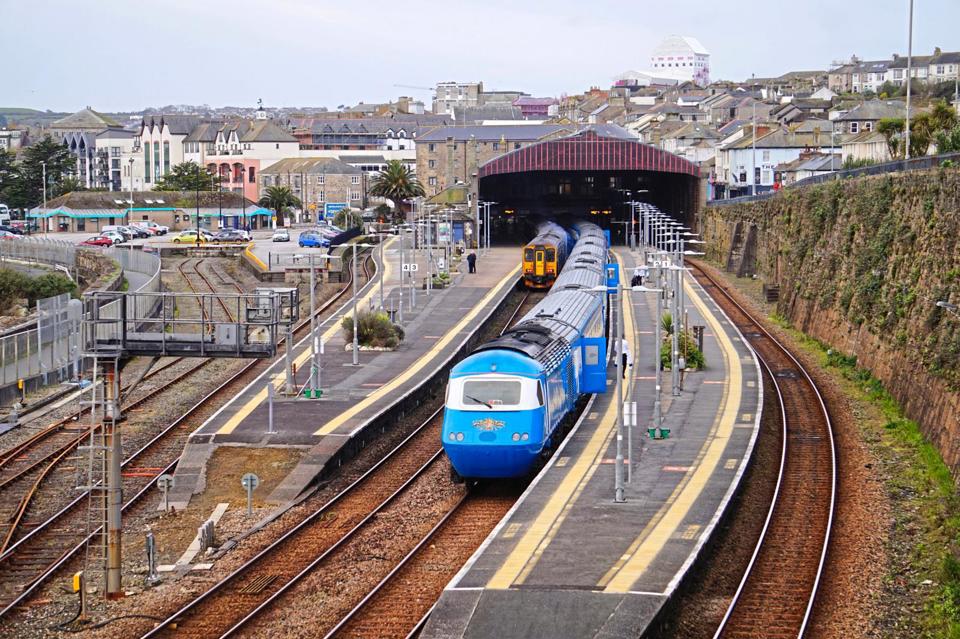Electric railways are cleaner and greener. That’s great.
But they also demand considerable up-front spending. Which isn’t so great.
Following the embarrassing curtailment of Great Western’s electrification programme in the 2010s (there are lineside masts but no wires in places such as Chippenham and between Didcot and Oxford), engineers have put considerable effort into making it cheaper to erect overhead line equipment (OLE).
Some of this work makes electrification cheaper in itself (extending the distance between masts means fewer of them and fewer foundations to build), but it also cuts enabling work costs. This might mean that local authorities receive fewer new bridges for their roads than they’ve become used to.
When Network Rail published its Traction Decarbonisation Network Strategy in 2020, it suggested that Britain needed up to 90% of its network electrified (on a single-track kilometre basis).
Today, RIA suggests that a 66%-wired network would let all passenger services and 95% of freight become decarbonised by 2050.
What’s making the difference? Batteries.
Today, batteries are running on the network and showing promise, according to RIA Technical Director David Clarke.
There are benefits that come with moving away from diesel. The most obvious is cleaner air - particularly at stations such as Paddington, where HSTs no longer send exhaust plumes up into the trainshed roof. Instead, electric trains come and go, making the whole place quieter and more pleasant.
David Clarke argues that this makes the railway more attractive, especially to younger generations.
But there’s no real plan to decarbonise rail travel, so David Clarke at RIA has pulled one together.
His plan is one of thirds - currently one third of the network is electrified, to which he’d add another third, leaving the final third not needing wires and which can be run using battery electric trains.
Clarke would order battery electric trains now, recommending that 1,100 vehicles replace the same number of existing diesel stock.
His report says: “Given that there are 1,087 sub-100mph DMU vehicles which will be 35 years old by 2030, RIA believes there is an opportunity to replace these units with new/converted BEMUs and realise passenger, carbon and air quality benefits quickly.”
RIA has crunched the numbers on 216 diesel routes and reckons that 133 of them could convert to BEMUs without any extra electrification.
RIA’s work rests on the DfT delivering its electrification aspirations into funded programmes. This lets the trade organisation claim that its plan needs no extra taxpayer funding over the next decade.
RIA’s plan also assumes that freight traffic receives a major electrification boost, with the plans from the Chartered Institute of Logistics and Transport translated into masts and wires.
CILT’s plan is ambitious. It includes the long-held ambition of wiring from Felixstowe to Nuneaton, but also freight’s East Coast Main Line diversion through Lincoln between Peterborough and Doncaster.
For heavy freight, CILT wants to see wires above the Berks and Hants line to link the Mendip quarries with London. Then there’s Bristol-Birmingham, the route to Southampton, and an electric link into Teesside.
Adding current projects to Network North’s aspirations brings the proportion of electrified lines to 51%. Delivery of CILT’s strategic lines lifts that further to 59%. From there, RIA reckons it needs enough extra wires to lift the proportion to 66% and decarbonise all passenger services. RIA’s extra wires, and the fast-chargers it proposes, enable battery trains to extend their reach.
RIA reckons its plan is “plausible, affordable and deliverable”. Which isn’t the same as easy and cheap.
Yet for all these obstacles threatening to knock RIA off-course, its plan does provide a route to a decarbonised future for rail. It gives a path to removing diesel trains. That’s something to support.
A full version of this opinion piece appears in issue 1008 of RAIL. Get your copy delivered to your letterbox or inbox.



















Login to comment
Comments
No comments have been made yet.